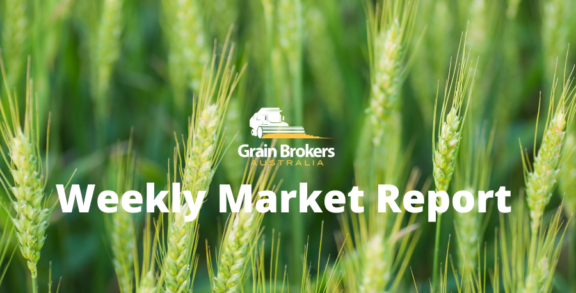
This season’s crop production in Canada increased dramatically on the back of vastly improved growing conditions across most of the country compared to the 2021/22 season. The higher production was primarily driven by significantly higher yields and a lower abandoned area, with the severe drought that dominated the previous season loosening its grip in most regions throughout 2022.
Statistics Canada released its final field crop production estimates for the year on Friday of last week. The results were based on feedback for 27,200 producers interviewed in the October 7 to November 14 period. Farmers were invited to report estimates of seeded and harvested areas, yields and total production of grains, oilseeds and special crops. This report provides some ground truthing for the production estimate reports released during the growing season, which used predictive modelling based on satellite imagery and agroclimatic data to arrive at a yield forecast.
The grower feedback and data collected by local government crop inspectors in a series of field walks conducted before, during and after harvest all pointed to lower average yields in many regions than the predictive model suggested. This led to some downward production revisions compared to the most recent model-based estimates released in mid-November, although barley and oats did buck that trend.
The report’s highlight was total field crop production pegged at 96.059 million metric tonne, the third highest on record. It was 10.4 per cent above the five-year average and 34 per cent higher than the 71.656MMT produced a season earlier. The two biggest-ever field crop production years in Canada were 2020/21 with 100.051MMT and 2013/14 with 97.947MMT.
Total wheat production rose by 51.7 per cent year-on-year to 33.8MMT, the third highest on record. This was almost 0.9MMT, or 2.5 per cent lower than the model-based estimate. Durum wheat production ended up at 5.4MMT compared to 6.1MMT in the November report using model data; winter and spring wheat production totalled 28.4MMT collectively, against 28.6MMT using the predictive model approach. The average yield across all provinces was 3.36MT/ha, and the harvested area rose by 9.7 per cent to 10.1 million hectares.
In Saskatchewan, the average wheat yield increased by 47.3 per cent to 2.78 metric tonne per hectare, while harvested area rose by 13.5 per cent to 5.3 million hectares, resulting in a 67.2 per cent rise in production to 14.8MMT. The production turnaround was even more dramatic in Alberta, rising 76.7 per cent year-on-year to 11.3MMT. Yields were up 59.8 per cent to 3.74MT/ha and the harvested area increased by 10.6 per cent.
Canola is the second-biggest field crop in Canada by area and production, although it did challenge wheat’s mantle in terms of the harvested area last season. Statistics Canada posted a final canola production figure of 18.2MMT, 32.1 per cent higher than in 2021/22. Yield was the big swinger, up by 37.6 per cent to 2.11MT/ha, while the harvested area fell by 3.9 per cent to 8.6 million hectares. However, the final output was more than 0.9MMT, or 4.8 per cent below the predictive model, due to lower-than-expected yield feedback in the grower survey.
Barley production rose by 43.5 per cent compared to last season to a tick under 10MMT. While the harvested area was down by 12.3 per cent to 6.5 million hectares, the average national yield rose a whopping 63.7 per cent to 3.79MT/ha due to much better seasonal conditions, particularly in the western Prairies. The predictive model had barley production of nearly 0.6MMT, or 5.9 per cent lower at just over 9.4MMT.
One of the biggest surprises was the massive jump in oat output. Production increased 86.1 per cent from 2.8MMT last season to 5.2MMT this season on the compounding effects of a 19.2 per cent hike in the harvested area to 1.4 million hectares and a 56.2 per cent increase in yield to 3.5MT/ha. The November report had the crop at 4.7MMT.
On the pulse front, dry field pea production increased 51.6 per cent from 2.3MMT last harvest to 3.4MMT this harvest, off a smaller harvested area. Lentil production rose 43.2 per cent compared to the previous season to 2.3MMT, off a similar harvested area.
Summer crop production also rose with corn the star. Total corn production rose 4 per cent to a record 14.5MMT this season. Harvested area was the most significant influence, rising 3.8 per cent to 1.5 million hectares, with yield unchanged. Soybean production improved by 4.3 per cent to 6.5MMT on the back of a 0.7 per cent decrease in the harvested area offset by a 5 per cent increase in yield.
With a return to a more productive season comes a more significant involvement in the global export playground and some added competition for Australian exporters into several Asian destinations. The United States Department of Agriculture has Canadian wheat exports jumping by 73 per cent from 15MMT in the 2021/22 marketing year to 26MMT in the current marketing year, with milling quality volumes expected to be the big mover.
Canola exports are forecast to rebound by 51 per cent from 5.3MMT to 8MMT year-on-year, with Japan, China and Mexico likely to be the primary beneficiaries. However, with canola oil derived renewable diesel now qualifying as an advanced biofuel under the Renewable Fuel Standard, exports to the United States are expected to increase sharply.
The USDA has barley exports making a 50 per cent recovery from 2MMT to 3MMT, with much of the increase expected to be in the malting barley category. And Canada continues its domination of international oat trade, forecast to account for 68 per cent of global exports in 2022/23 following a 50 per cent hike to 1.8MMT. Australia is the other major player in that arena, with around 19 per cent of the niche market, down from 28 per cent last season.
Call your local Grain Brokers Australia representative on 1300 946 544 to discuss your grain marketing needs.





